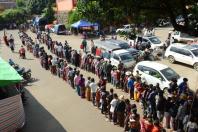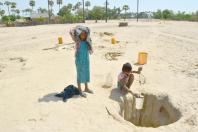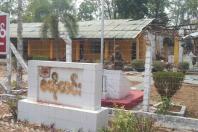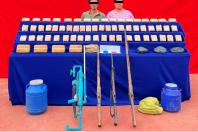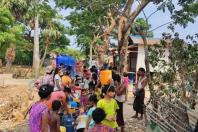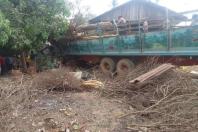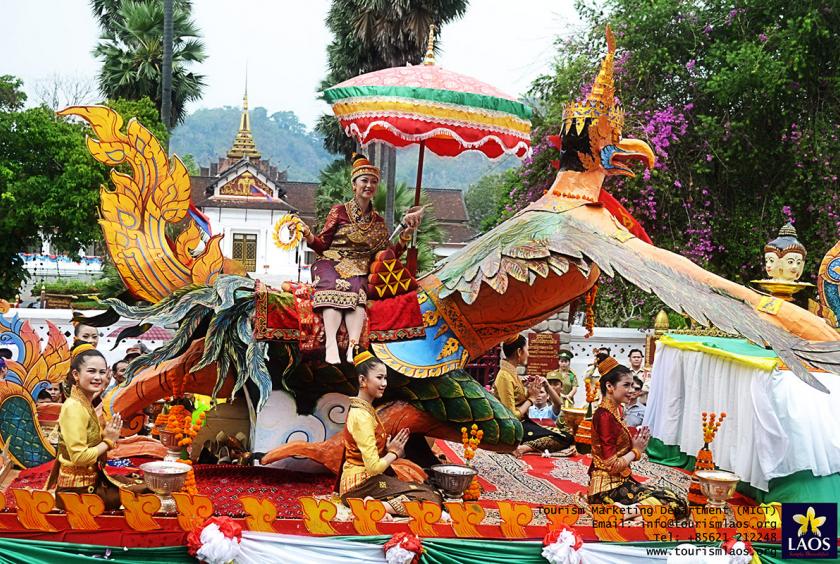
(Vientian Times/ANN) Most people have made plans to celebrate Lao New Year (Pi Mai Lao) or water festival from April 14-16 when people throughout the country will visit temples, eat and drink with friends, and joyfully throw water over each other.
If you are lucky enough to be visiting Laos at this time of year but are unsure as to the best place to be, rest assured that Vientiane has many exciting activities lined up.
Of course, temples play an integral part in Pi Mai Lao and tourists are welcome to take part in the various traditional festivities held at temples around the city.
Monks have already put up Buddhist flags and applied fresh coats of paint to temple walls to spruce up places of worship for visitors coming to make offerings.
On the first day of the New Year, local residents visit nine temples to sprinkle perfumed water on Buddha images in a tradition said to bring happiness, good health, luck and long life.
Inpaeng, Ongteu, Mixay, Haisok, Hor Phakeo, Sisaket, Xiengyeun, Simeuang and Chan are usually high on the list of temples to be visited on the day.
Other temples around the capital are also visited by local people and display Buddha images for people to sprinkle with fragrant water.
The That Luang stupa and Xiengkhuan Buddha Park are also popular places for visitors over the holiday.
In Luang Prabang:
Pi Mai Lao is particularly spectacular in Luang Prabang as this is where there are colourful parades and other festivities, which normally last about a week.
The religious highlight is when the revered Prabang Buddha image is carried through the streets in a golden palanquin, carried by young men. Leading the parade are two red-faced mythical characters called Pouyer and Yayer. At the parade’s end, the statue is placed in a temple called Vat May where it rests for the three-day festival. Throughout this time people pour water mixed with flowers over it.
There is an annual beauty pageant in Luang Prabang called the Nang Sangkhan pageant. There are seven contestants, each one symbolising one of King Kabinlaphom’s seven daughters, who ride along the street seated on a hand-made model of the animal representing the New Year, as part of the parade.
In the evenings, there are candlelight processions and traditional performances.
Savannakhet and Champassak:
Events are held to bid farewell to the old year and welcome the new year. In Savannakhet, the biggest festival is held in the provincial capital of Kaysone Phomvihane. In addition, people visit That Inhang, a well-known stupa, to pour water over religious artefacts. In Champassak province, the centre of activities is Pakxe, and of course people also head to the ancient Vat Phou temple site to pour perfumed water over centuries-old relics.
One of the main festival activities is the selection of a Nang Sangkhan (Miss Lao New Year) – a local girl who is chosen in a contest to parade through the city centre on the back of a creature modelled on the animal that is symbolic of that particular year.
Some families hold Baci ceremonies, with big arches made of rice plants that pay homage to the earth and sky as well as to the land spirits who rule over rice production. People splash or pour fragrant water mixed with flower petals on people passing by to wash away any misfortune they may harbour.
At temples everywhere, Buddha statues are brought outside and placed on pedestals so that local people can pour water over them. It is said that if people visit nine temples, they will have good luck for the whole year.
It’s not only Laos that celebrates the Buddhist new year with so much water and enthussiasm – the event is marked in a similar way in Cambodia, Myanmar, Sri Lanka and Thailand.
So don’t forget to wish everyone a happy Lao New Year, Sabaidee Pi Mai or Xokdee Pi Mai Der, and smile while you get wet.

